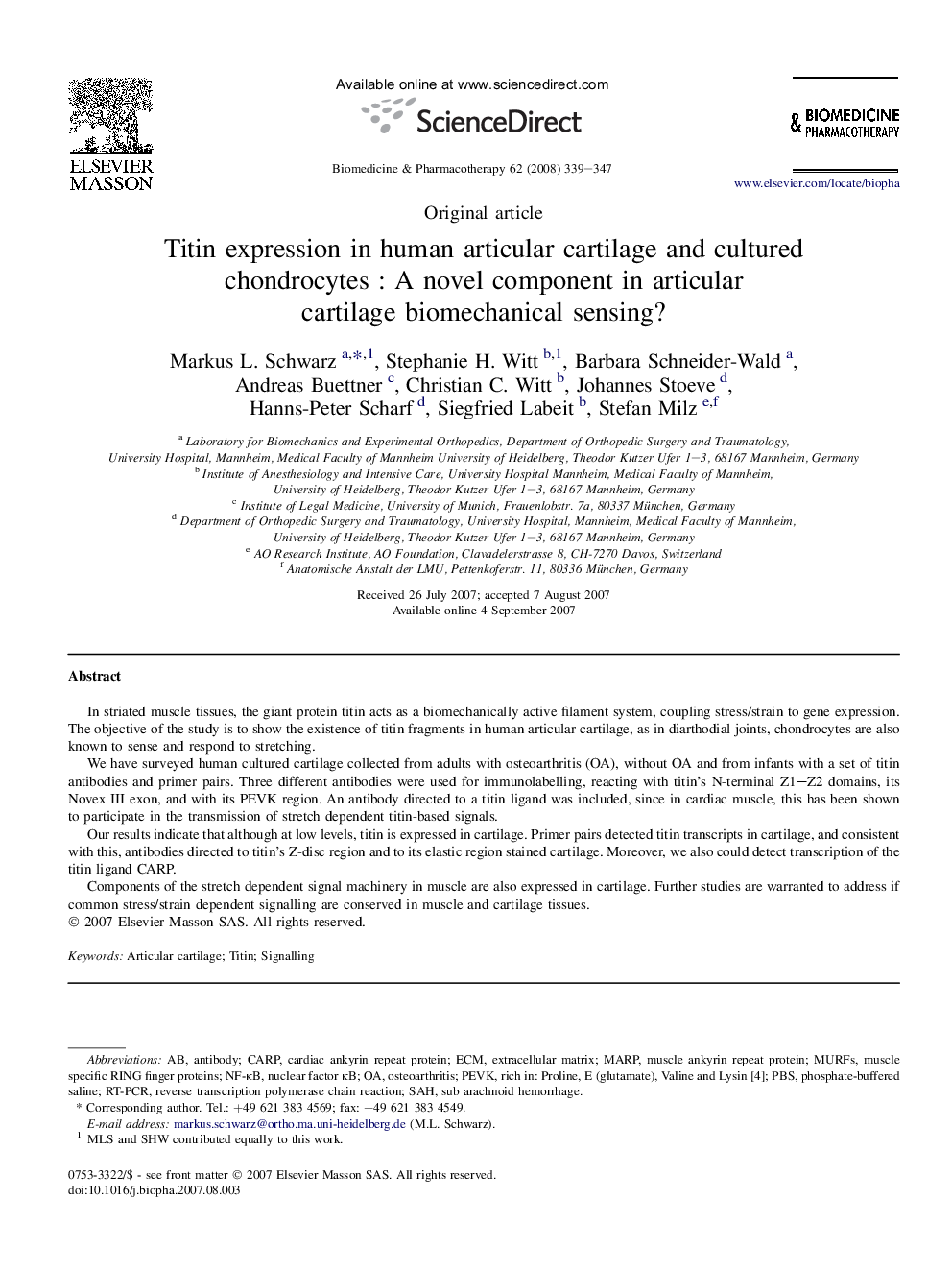| Article ID | Journal | Published Year | Pages | File Type |
|---|---|---|---|---|
| 2525727 | Biomedicine & Pharmacotherapy | 2008 | 9 Pages |
In striated muscle tissues, the giant protein titin acts as a biomechanically active filament system, coupling stress/strain to gene expression. The objective of the study is to show the existence of titin fragments in human articular cartilage, as in diarthodial joints, chondrocytes are also known to sense and respond to stretching.We have surveyed human cultured cartilage collected from adults with osteoarthritis (OA), without OA and from infants with a set of titin antibodies and primer pairs. Three different antibodies were used for immunolabelling, reacting with titin's N-terminal Z1–Z2 domains, its Novex III exon, and with its PEVK region. An antibody directed to a titin ligand was included, since in cardiac muscle, this has been shown to participate in the transmission of stretch dependent titin-based signals.Our results indicate that although at low levels, titin is expressed in cartilage. Primer pairs detected titin transcripts in cartilage, and consistent with this, antibodies directed to titin's Z-disc region and to its elastic region stained cartilage. Moreover, we also could detect transcription of the titin ligand CARP.Components of the stretch dependent signal machinery in muscle are also expressed in cartilage. Further studies are warranted to address if common stress/strain dependent signalling are conserved in muscle and cartilage tissues.
